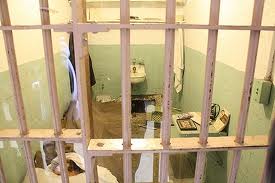I don’t know how he did it, but he did.
Already running late, we were rushing to join friends for a social occasion when a distant cry echoed from the smallest room in the house. Keegan had locked himself in the toilet and was trapped like a bug in a jar. After several frantic but futile efforts, the free members of the family resigned themselves to the realisation that we simply weren’t cut out for Houdini-type stunts. Another myth shattered, but then again reality has a way of doing that. Some radical innovative initiative was required if Keegan was ever to experience his own long walk to freedom.
At the height of our increasingly desperate endeavours the possibility of leaving him in there and periodically throwing food in through the window became an attractive option. I started to think of all the money I would save, how clean and quiet the house would be when ‘. . . Don’t just stand there, get my little boy out of that room!’ was the sharp and not-to-be-ignored demand that penetrated the fog of my daydreaming.
 It was the window that was to provide the breakthrough. By using an assortment of lethal looking weaponry I was eventually able to dismantle what once had been an Alcatraz-type burglar guard, thereby liberating the prisoner. I suspect he had rather enjoyed all the attention and efforts (mainly sound effects) but had the good sense not to show it, playing instead to his relieved mother’s emotions rather than to than to the ‘you-would-be-better-off-in- there’ expression on my face.
It was the window that was to provide the breakthrough. By using an assortment of lethal looking weaponry I was eventually able to dismantle what once had been an Alcatraz-type burglar guard, thereby liberating the prisoner. I suspect he had rather enjoyed all the attention and efforts (mainly sound effects) but had the good sense not to show it, playing instead to his relieved mother’s emotions rather than to than to the ‘you-would-be-better-off-in- there’ expression on my face.
Leaders can often come to believe that isolation and solid boundaries are the best ways to preserve their position and status. However, lessons from the new sciences yield a novel new perspective in the seemingly paradoxical relationship between freedom and order.
It would appear that these two forces – freedom and order – for so long placed in opposite corners of the corporate ring, are in fact partners in creating healthy, well-ordered systems. If people are free to make their own decisions, guided by a clear understanding of the organisational core for them to reference, then the whole system develops greater coherence and strength. The organisation becomes less controlling but more orderly. When leaders rely only on control in order to lead they create the very conditions that threaten the organisation’s survival.
Last thought . . .
‘Only two things are infinite. The universe and human stupidity, and I’m not sure about the former’ – Albert Einstein


